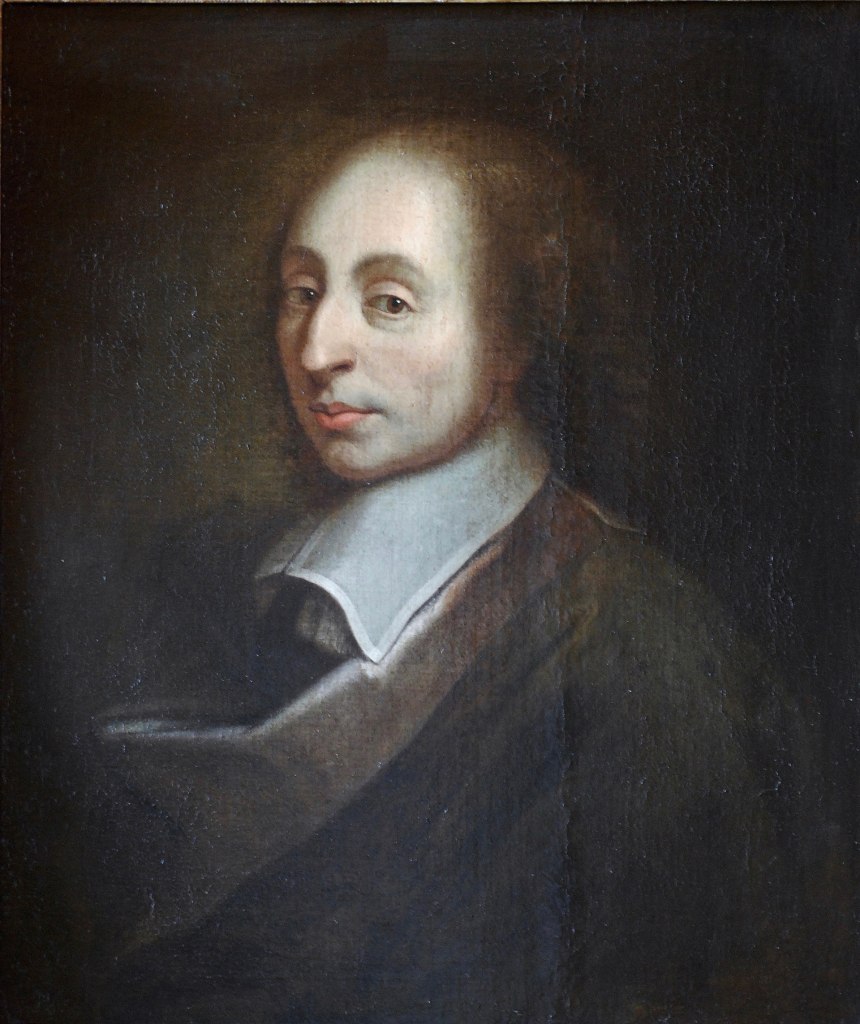When Isaac Beeckman (1588–1637) was familiarizing the young René Descartes with mathematical physics in Breda in 1618, he assigned him exercises to aid in developing his proficiency in this emerging field. One such exercise involved deriving the hydrostatic paradox, which was first introduced by Simon Stevin (1548–1620) in his De Beghinselen des Waterwichts (Principles on the Weight of Water) in 1586. Beeckman had studied under Stevin while attending Leiden University. The discovery of the hydrostatic paradox is frequently mistakenly credited to Blaise Pascal (1623–1662), who conducted extensive research in hydrostatics, and it is to Pascal and his contributions that we now look.
Blaise Pascal led an intriguing life, engaging in various scientific and mathematical disciplines before gravitating towards religion and philosophy. He was born in Clermont-Ferrand in the Auvergne region, to the amateur mathematician, jurist, and chief tax official of France, Étienne Pascal (1588–1651), and his wife Antoinette Begon, who passed away three years after Blaise’s birth in 1626. He had two sisters who reached adulthood, Gilberte (1620–1687) and Jacqueline (1625–1661).
After his wife’s death, Étienne relocated the family to Paris in 1631. Blaise was educated by his father, who initially prohibited him from studying mathematics until he turned fifteen. Nevertheless, Blaise started self-teaching geometry at twelve, prompting his father to gift him a copy of Euclid.
At the age of fourteen, Étienne Pascal began taking his son to the weekly gatherings of the Academia Parisiensis in Marin Mersenne’s (1588–1648) cell.
Blaise developed a keen interest in Girard Desargues’ (1591–1661) work on conic sections. At merely sixteen, he presented Mersenne with a single sheet containing several theorems of projective geometry, his Essai pour les conics (Essay on Conics), which featured the so-called mystical hexagram. Pascal’s theorem, as it is referred to today, asserts that if six arbitrary points are selected on a conic and connected by line segments in any arrangement to form a hexagon, then the three pairs of opposite sides of the hexagon, extended if needed, intersect at three points that lie on a straight line called the Pascal line.
Descartes responded very unfavorably to the young man’s accomplishment, informing Mersenne that it must have been the father’s work. Upon Mersenne assuring him that it was indeed the son’s creation, Descartes’s response was dismissive:
“I do not find it unusual that he has provided demonstrations about conics that are more fitting than those of the ancients,” adding, “but other subjects related to this theme could be proposed that would hardly be conceived by a 16-year-old child.”
This foreshadowed the future dynamic between the two mathematicians, which was seldom amiable.
Blaise Pascal would proceed to make several significant contributions to the advancement of mathematics. He contributed to the theory of conics in his The Generation of Conic Sections, written over several years but left unfinished. Nevertheless, Leibniz and Tschirnhaus made notes from it, and it is through these notes that a reasonably complete understanding of the work has been established. In correspondence with Pierre de Fermat (1601–1665), he laid the groundwork for probability theory.
Perhaps the most recognized from school mathematics is his Traité du triangle arithmétique, written in 1654 but released posthumously in 1665.
It should be noted that Pascal’s triangle was previously known to Persian, Indian, and Chinese mathematicians during the Middle Ages and in Europe to Jordanus de Nemore in the thirteenth century, Levi ben Gershon (1288–1344) in the fourteenth century, and also to Peter Apian (1595–1552), who featured it on the cover of his Ein newe und wolgegründete unterweisung aller Kauffmanns Rechnung in dreyen Büchern, mit schönen Regeln und fragstücken begriffen (Ingolstadt, 1527),
as well as by Tartaglia (1500–1577) and Girolamo Cardano (1501–1576) in the sixteenth century. However, Pascal’s publication had a profound effect in the seventeenth century.
Pascal is also renowned for inventing an early mechanical calculator, the Pascaline, in 1642, to aid his father with tax documents. Contrary to widespread belief, the Pascaline was neither dependable nor successful, and the project was abandoned within a few
